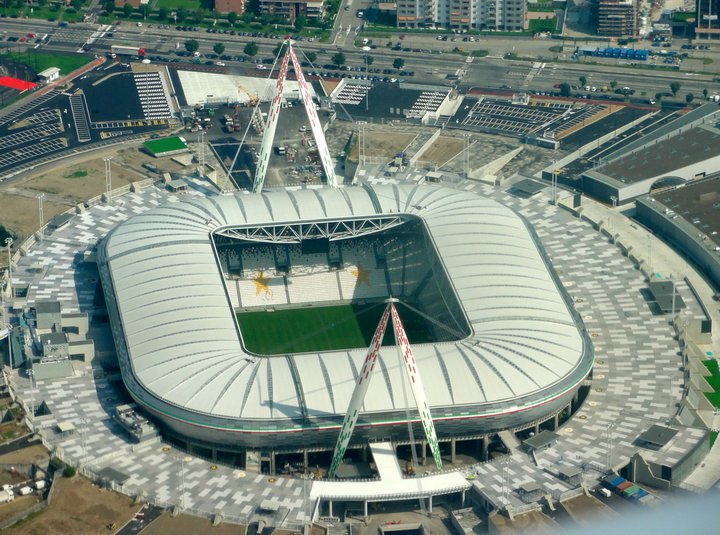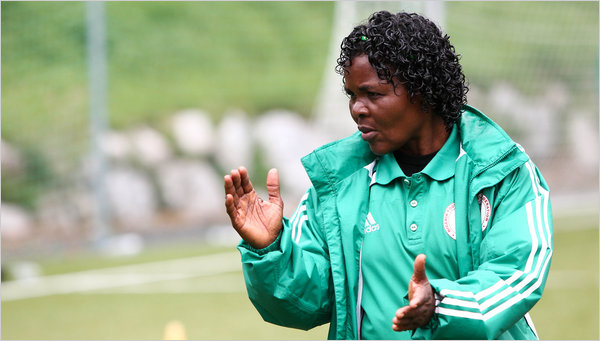Another uplifting football moment courtesy of the women who play, officiate and support the game.
Category: Video
Inspiration: TMB Panyee Football Club
This short film is based on a true story. In 1986 a football team that lived on a little island in the south of Thailand called Koh Panyee. It’s a floating village in the middle of the sea that has not an inch of soil. The kids here loved to watch football but had nowhere to play or practice. But they didn’t let that stop them. They challenged the norm and have become a great inspiration for new generations on the island.
Juventus Stadium: Changing Calcio

Although I was born and raised in Rome, I support Juve. My choice was based on the need to find a club that could compete with AC Milan and Inter, my older brothers’ favorite teams. I was barely six years old when I first saw Juve play. It was in Perugia (my father’s team) and “we” somehow lost 0-1 thanks to a goal by Renato Curi. As a result, Torino won the scudetto. What a tragedy! But the real tragedy happened a year later when I returned to Perugia hoping for a better Juve performance: Curi collapsed on the pitch and died of a heart attack. Talk about putting things in perspective.
Over the next decade, I watched Juve “under cover” at the Olimpico against Roma and Lazio, and in other cities as well. It could be dangerous. At Marassi stadium, for instance, Genoa’s ultras invaded our curva (end) wielding broken bottles. When all was said and done, a guy two rows in front of me was oozing blood from a stab wound in his leg. Surely it would have been safer in Turin, but as a young teenager living more than 400 miles away it was tough to make the pilgrimage to the Stadio Comunale. And after I moved to the United States in the mid-1980s, it seemed as if I had been sentenced to never attend a Juve “home” match. A victim of contrappasso for my act of betrayal of Roma and Lazio?
The inauguration of Juve’s new stadium is inspiring me to finally make the journey to Turin.
September 8, 2011, heralds the arrival of a new era in Italian football, or calcio as we call it. Juve’s friendly against Notts County — the club responsible for the Old Lady’s adoption of black-and-white kits — marks the first time an Italian club will play in its privately owned stadium.
It is a welcoming football-specific stadium: no track, no moat, no fence. It has a capacity of 41,000 seats and a design similar to many English Premier League grounds. Juve’s stadium provides a long-awaited alternative to overpriced, under-serviced, militarized, and outdated grounds found all over the peninsula. It rises on the ashes of its cursed predecessor, the Delle Alpi. Built on the outskirts of Turin for the 1990 World Cup, Delle Alpi stadium was twice as expensive as originally planned, featured terrible sight lines (largely due to a never-used running track), a bumpy playing surface, and abominably high maintenance costs. In 2003 Juve took it over from the city under a 99-year lease and demolition started in 2008. In the meantime, both Juve and Torino relocated to the downsized ex-Comunale stadium, renamed Olimpico after hosting the inaugural and closing ceremonies for the 2006 Winter Olympics.
Looking at the calendar, I could make the Piedmont derby between Juve and Novara on December 18 . . .
For a virtual tour of the new stadium click here. For videos documenting the construction process go here, here, here, here, here, here, and here.
Narco-Futbol: Gunfire at Stadium in Mexico
Dramatic footage of the shooting outside Corona Stadium in Torreon, Mexico, during the Santos-Morelia match on August 20, 2011. “In Mexico, there are not too many comments in media and newspapers about the event, besides a few comments stating that everybody was and is OK,” reports Football Scholars Forum member Alejandro Gonzales. “On the radio, they are explaining more . . . they have catalogued this event as a metaphor of the current state of affairs in Mexico.”

The New York Times today has a piece by Jere Longman about homophobia in the Nigerian team about to play in the 2011 Women’s World Cup. While it’s nice to see the newspaper of record in the U.S. paying attention to the women’s game and to African women in particular, the overall thrust of the article is that homophobia is an example of the “cultural obstacles that remain for many African women who play soccer.”
The story focuses on a single character: head coach Eucharia Uche. A former player and fervent evangelical Christian, Uche claims to have “used religion in an attempt to rid her team of homosexual behavior,” describing the latter as a “dirty issue,” and “spiritually, morally very wrong.”
There are several problems with the article, but I’ll focus on two key ones: (1) blaming “culture,” and (2) African “exceptionalism.” Let’s tackle the first one. While “cultural inhibitions are still cited as inhibitions to girls playing” notes Martha Saavedra’s seminal 2003 overview of the African women’s game published in Soccer and Society, “the general economic troubles and the lack of resources overall is still perhaps the most serious hindrance. Even the bans on women’s football in Northern Nigeria may be indirectly linked to this.” Yes, cultural conservatism (not “culture”) is a factor in some areas, but this does not necessarily apply to all of Nigeria, let alone all of “Africa” as the article’s headline suggests.
This reductionism leads to my second point: African exceptionalism. The first thirteen paragraphs of the article create the impression that homophobia is a singularly “African” issue. It is only in the 14th paragraph that some de-exoticization finally takes place: “The treatment of lesbians in sport is not a matter restricted to women in Africa. Some women on previous United States national soccer teams have been reluctant to live openly gay lifestyles for fear of repercussions.” Surely, American readers of the Times would have been quite interested to learn more about the existence of a “culture” of silence and repression in elite U.S. soccer. It might even invite a comparison with the grim situation in Uche’s squad.
The lack of discussion about women’s football in Nigeria is puzzling as well. The article contains not a single reference to the rich history of the game in Africa’s most populous nation. As I write in African Soccerscapes, women in Nigeria were playing as early as 1943. The 20 October 1943 issue of the Nigerian Spokesman newspaper ran this story:
In response to the demand of the people of Onitsha, the Sierra Leonean friendly Society has started to make arrangements for the replay of the ladies’ football mach which so thrilled the township recently. Good news for football enthusiasts . . . It was the first of its kind to be staged in Onitsha.” Fine show but not up to the standard of boys soccer. “It seemed odd to some to see our women in shorts kicking a football about the field, or clashing with one another after the manner of men . . . but the game itself, when it came to be played, exploded all the fantastic theories some malevolent individuals had concocted about it, and it was a colossal success both in the fun that it provided and on the financial side of it.
By 1960 (Nigeria’s independence) there were women’s teams in Jos, Lagos, Calabar, Onitsha, Kanu, Enugu and other towns. By 1989 there were 28 women’s clubs active, as well as a Nigerian Female Football Organizers Association. This history is vital to gaining a sharper understanding of the Super Falcons’ continental dominance since they first represented Africa at the WWC in 1991.
Let’s hope that future U.S. media coverage of the 2011 WWC will be more informed and more tightly focused on the game itself. The fans deserve it. The players deserve it. Football deserves it.
Football is Freedom
Thirty years on. No one said it better. “Football is Freedom.”
Keme Nzerem of Channel 4 News in the UK returns to South Africa. It will be interesting to see how the various media address the legacy of Africa’s first World Cup in the weeks ahead.